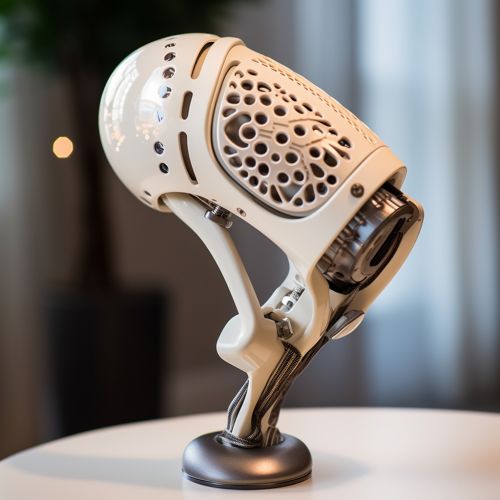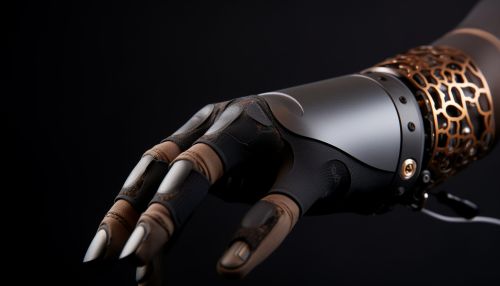Neuroprosthetics
Introduction
Neuroprosthetics, also known as neural prosthetics, is a discipline related to neuroscience and biomedical engineering that focuses on developing devices and systems capable of substituting motor, sensory or cognitive modalities that might have been damaged as a result of an injury or a disease. The field of neuroprosthetics is an innovative area of research within the broader field of biomedical engineering, with the potential to radically improve the quality of life for individuals suffering from neurological damage.


History
The concept of neuroprosthetics has its roots in the early 20th century, with the development of the first cochlear implants. However, it was not until the late 20th century that significant advancements were made in the field. The advent of microelectronics and sophisticated surgical techniques has allowed for the development of highly advanced neuroprosthetic devices.
Types of Neuroprosthetics
There are several types of neuroprosthetics currently in use or under development, including cochlear implants, retinal implants, and deep brain stimulators. Each of these devices works by interfacing directly with the nervous system, bypassing damaged areas to restore or replace lost functionality.
Cochlear Implants
Cochlear implants are devices that are surgically implanted into the cochlea of individuals with severe to profound sensorineural hearing loss. These devices bypass the damaged hair cells in the cochlea and directly stimulate the auditory nerve, allowing the individual to perceive sound.
Retinal Implants
Retinal implants, also known as bionic eyes, are neuroprosthetic devices designed to restore some level of vision to individuals with severe visual impairments, particularly those suffering from retinitis pigmentosa or age-related macular degeneration.
Deep Brain Stimulators
Deep brain stimulators are neuroprosthetic devices that are implanted into the brain to treat a variety of neurological conditions, including Parkinson's disease, dystonia, and essential tremor. These devices work by sending electrical impulses to specific areas of the brain, helping to regulate abnormal impulses caused by these conditions.
How Neuroprosthetics Work
Neuroprosthetic devices work by interfacing directly with the nervous system. The devices translate external stimuli into electrical signals that the brain can understand, bypassing damaged areas of the nervous system to restore or replace lost functionality. The process involves several steps, including signal acquisition, signal processing, and stimulation of the nervous system.
Signal Acquisition
The first step in the process is signal acquisition. This involves capturing the electrical signals generated by the nervous system. In the case of motor neuroprosthetics, these signals are typically acquired from the muscles or directly from the brain using electrodes.
Signal Processing
Once the signals have been acquired, they must be processed to extract the relevant information. This is typically done using a combination of hardware and software, and involves filtering the signals and converting them into a format that can be used to control the neuroprosthetic device.
Stimulation of the Nervous System
The final step in the process is the stimulation of the nervous system. This is done by delivering electrical signals to the nervous system, either through direct electrical stimulation of the nerves or through the use of magnetic fields.
Current Research and Future Directions
Research in the field of neuroprosthetics is currently focused on improving the functionality and reliability of existing devices, as well as developing new types of neuroprosthetic devices. One area of particular interest is the development of brain-computer interfaces (BCIs), which allow for direct communication between the brain and an external device.
Brain-computer interfaces have the potential to significantly improve the quality of life for individuals with severe physical disabilities, by allowing them to control external devices using their thoughts. However, significant challenges remain in the development of BCIs, including the need for more accurate signal acquisition and processing techniques, and the development of more effective methods for stimulating the nervous system.
